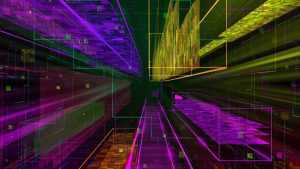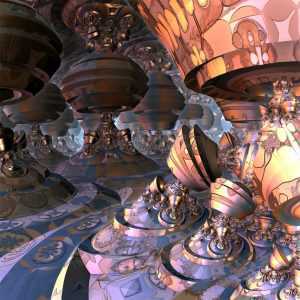There is something called structured light in?quantum mechanics. In layman terms, it is a way to describe patterns and pictures of light. This is the medium that physicists have been really excited about, because, if things go as planned, it will be the basis of the next-generation ultra-secure communication platform. It will be faster and it will be more secure than anything we have today. Although speaking about quantum particles, their nature of states and so on is mind-boggling in itself, the underlying reasons can be more perplexing than usual.

A group of researchers from the University of Witwatersrand in South Africa makes an attempt to review the progress made in the field in the past 100 years. They are working to employ structured light in quantum protocols to enhance and create a larger encoding alphabet which will give a higher level of security and even better resistance to noise. Achieving these two goals is not simple.
According to Andrew Forbes, they really want to do quantum mechanics with patterns of light and this is a strong concept. It is like our faces that are used to unlock your smartphone and it is possible because it has been established that humans have different faces. And, there may be 7 other people in the world that look like you. The same is the underlying principle. In quantum physics, by patterns of light, it means, it means that light can have a variety of faces and can be made unique. Once it is made unique, it can be used as an identifier.
When these unique identifiers can be distinguished from each other, they can be used to form an alphabet. More so according to?quantum theory, in theory there can exist in infinite patterns to light meaning that an alphabet can be infinite length. This means, the security encoding is infinite in length and cannot be deciphered.
The Traditional Approach to Quantum Protocols
When the use of quantum mechanics was first proposed years back to be used as computing units, it was rather misunderstood and met with skepticism. The quantum protocols were implemented using the polarization of light which means that it could hold just 2 values, 0 and 1. This two-level information constrained the capacity of 1 photon to hold just 1 bit of information.

But, with quantum theory and the use of structured light, the information capacity can be much higher. Also, its security is much stronger as much as the robustness to noise. The patterns of light are a route to creating higher-dimensional states instead of just 2 states. And, Forbes was really confident at this idea taking flight. In the field ofquantum theory, this is called a Qubit rather than a bit.
But, the necessary toolkit to use them is still underdeveloped and this is where?quantum physics?and its practitioners come to the rescue. It helps to mention that as a community they have made noteworthy advances in the field and both in science and derived technologies. Now, the term called entanglement that is derived directly from?quantum theory?talks about swapping the states called ?entanglement swapping? to produce a core ingredient of a quantum repeater. It has been demonstrated that the spatial modes of light can be used to securely communicate between nodes in the channel. And, all these together bring us close to a faster and more secure means of communicating on a network that is called a quantum network.
Towards The High-Dimensional States of a Quantum Computer
If?quantum mechanics?is to structured light,quantum physics is to a quantum computer. What the world sees is the result of these fields and the advances in technology that ultimately affects our lives. In the role of constructing exotic multiparty high-dimensional states, the first quantum computing processors were realized. It has an enhanced resolution in ghost imaging produced by combining light from two light detectors. Yet, it has always remained a challenging task to control them and stabilize them.

Forbes mentions that the knowledge of creating and detecting entangled photos in patterns is already there. But, the control over their stability is not yet achieved. Even from one end of the optic fiber to another, the distortion can be significant. In?quantum mechanic, this solution is still unsolved only getting closer to minimizing the distortion.
Yes,?quantum theory?gives a clue to making these stable using semiconductors at very low temperatures to attain superconductivity and allow using Qubits, in case of a quantum computer, but the same using optic fibers are not proportionally transferable.
Another important concern is to be able to efficiently extract this information from the optical fiber. It requires just too many measurements at this moment that many leave it unsolved for good. Andrew Forbes and Issac Napes helped pioneer the use of hybrid states and refer to an old book on?quantum mechanics?that utilized polarization. But, today, it turns out that many states can be reliably implemented using simple tools like combining patterns of light. And, these are better ways to do things that polarization. Secondly, rather than allowing just two dimensions from polarization, the use of?quantum physics?in patterns of light enables us to achieve higher dimensions too. This can enable creating alphabets that have very long lengths of sequence encoding to mitigate any attempt to break it. With enough length, these messages are simply impossible to break without the decoding sequence.
We become so accustomed to errors and failures in using our devices that the idea of taking the leap is often unrealized. But, as in this university in South Africa, researchers are trying their best to make the physics work for us. A true quantum network that utilizes the modern principle of?quantum physics?and explores the frontiers of everyday computing and communication networks might be a reality someday. As with every great discovery, there is sure to be a lot of debate before they take off into our lives and products we use, but with slow and steady development, the future shines brighter.

